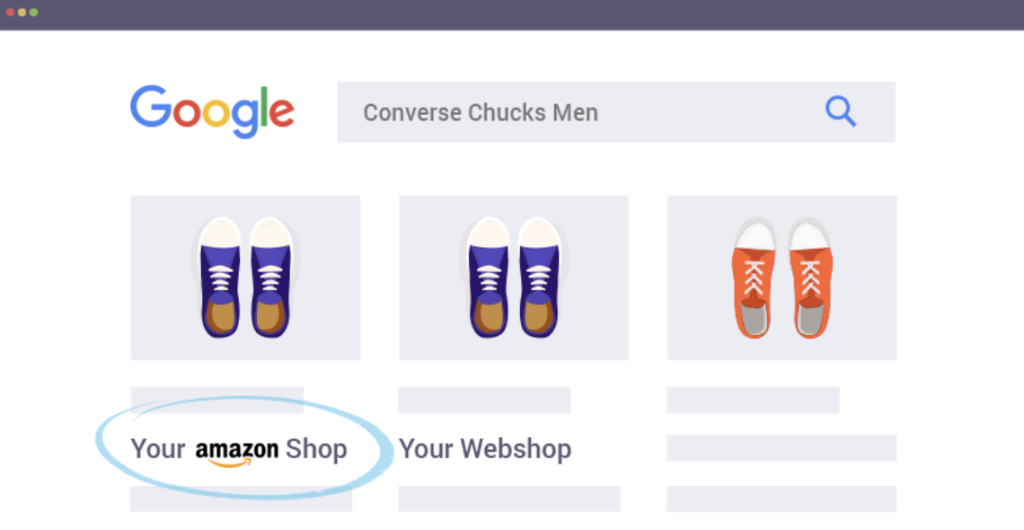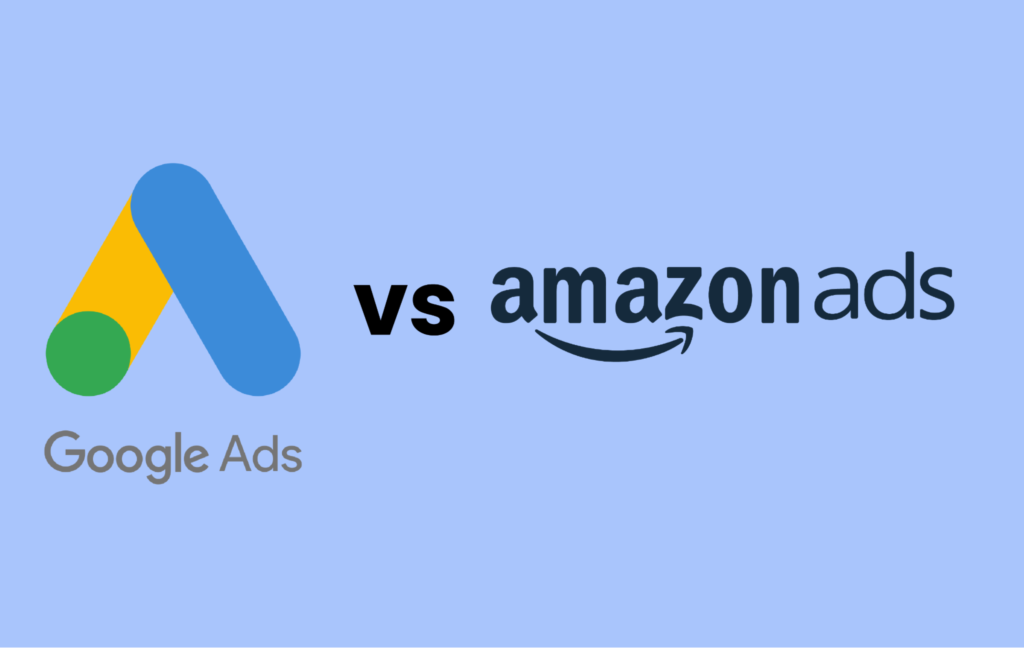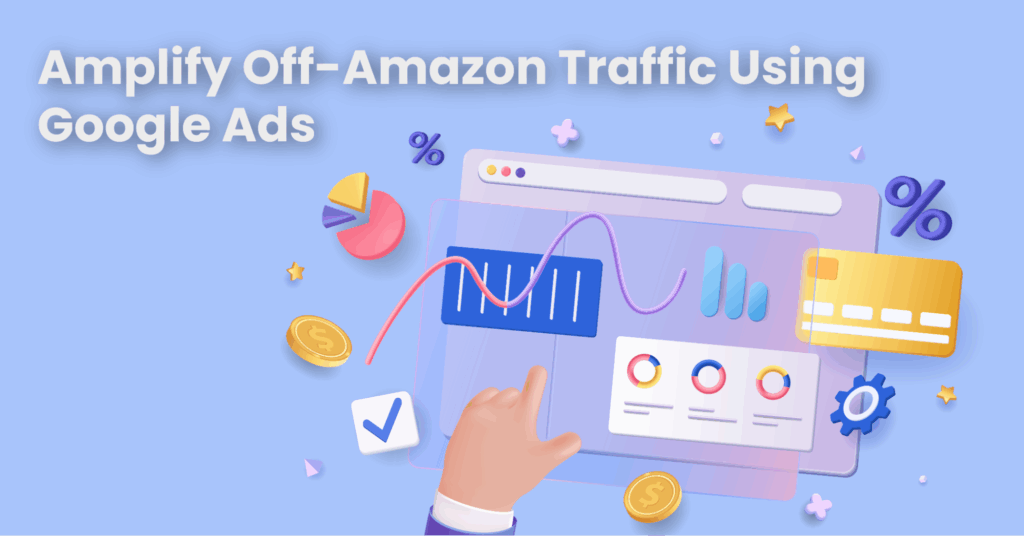How to advertise Amazon products on Google

When selling on Amazon, many people focus only on optimizing their products within the platform, forgetting that there’s a powerful way to attract customers from outside: running Google Ads. In fact, if you know how to advertise Amazon products on Google, you can expand your pool of potential customers and reach people who are searching for similar products but haven’t visited Amazon yet. This is your chance to turn Google searches into actual Amazon orders. The exciting part is that how to advertise Amazon products on Google is not as complicated as many people think. With a few precise setup steps and smart optimization strategies, you can turn Google into a high-quality traffic channel for your Amazon store. In this article, RentAds will share practical tips—from keyword selection, product page optimization, to performance tracking—so every dollar you spend brings back worthy returns.
Why choose how to advertise Amazon products on Google?

When selling on Amazon, many sellers believe that optimizing their store and running ads directly on the platform is enough. However, in reality, many customers search for products on Google before making a purchase on Amazon. That’s why combining how to advertise Amazon products on Google has become an increasingly popular choice. This not only opens up opportunities to attract more buyers but also helps your products appear where users are actively searching.
Benefits of advertising Amazon products on Google
Running Google Ads provides Amazon sellers with several clear advantages. First, it allows products to reach a massive audience through Google Search, where buyers often type in keywords directly related to what they want. Moreover, Google Ads can appear across multiple channels like YouTube, the Display Network, or Gmail, creating more touchpoints with potential customers. This not only drives more traffic to your Amazon product pages but also increases conversion opportunities. For highly competitive products, this can be the edge that helps sellers stand out.
Google Ads vs. Amazon Ads
If Amazon Ads are like competing in a busy marketplace where many sellers already exist, then Google Ads are like opening an extra entrance for customers to discover your products. Amazon Ads are strong because they target buyers who are already ready to purchase, while Google Ads excel at expanding reach to find new customers who may not even be thinking about Amazon yet. Cost structures differ too: Google provides more flexibility in budget allocation—from small to large—while Amazon Ads often face fierce bidding wars on hot keywords. When combined, sellers can attract both ready-to-buy Amazon customers and a wider audience from Google.
When should you prioritize Google Ads?
It’s not always necessary to invest heavily in Google Ads, but there are situations where doing so becomes more reasonable than ever. For example, when you launch a new product and want to quickly build awareness, Google Ads can make your product visible even before it has many reviews on Amazon. Or, when the market is highly competitive, Google Ads help prevent your product from getting “buried” among hundreds of choices on Amazon. In addition, during peak shopping periods such as Black Friday, Cyber Monday, or the holiday season, leveraging Google Ads can drive a large number of customers to your Amazon store, significantly increasing your sales opportunities beyond the usual level.
How to advertise Amazon products on Google

To understand how advertising Amazon products on Google can be effective, you need to go through each step—from setting up your account, creating tracking tags, to measuring results. This process is like building a “bridge” that connects Google Ads with your Amazon store, ensuring that every click is recorded and turned into actionable data. The following steps will give you a clear picture of the process, even if you’ve never tried running ads for Amazon products before.
Step 1: Sign up for Amazon Attribution
Log into your Amazon Ads Manager account. Amazon Attribution is the tool that tracks the customer journey from Google (or any external source) back to your Amazon product page. Activating this account is like setting up a “checkpoint” to know which ads are really driving traffic.
Step 2: Create tracking campaigns
After gaining access, you will add the products you want to measure into Amazon Attribution. This is the step where you set up tracking campaigns. Instead of running generic ads, you select specific products to track, which makes the returned data more accurate. For example, if you are selling three products at the same time, you can create three separate campaigns, each linked to one product, to easily compare performance.
Step 3: Create tags for your strategy
Each advertising campaign outside of Amazon needs its own unique “fingerprint.” Attribution tags are tracking codes that help you distinguish whether traffic is coming from Google, Facebook, or email marketing. When you create a separate tag for each strategy, it becomes easier to identify which channel is actually bringing in customers and which ones are underperforming. This helps you save costs instead of spreading your budget thin without knowing which channel works best.
Step 4: Apply tags to external ads outside Amazon
After creating the tag, the next step is to apply it to the ads you are running. Depending on the marketing channel, the way you apply the tag will differ.
- Google Ads: tag your Search campaigns or Display ads on Google.
- Social media: if you advertise on Facebook, Instagram, or TikTok, you can also use the same tag to track.
- Display and video ads: applied when running videos on YouTube or banners on websites.
- Email marketing: insert the tag into the links in the emails sent to customers.
Step 5: Monitor performance
Once the tags are applied, Amazon Attribution starts recording actual metrics, giving you a clear view of how your spending translates into returns. This allows you to easily optimize your budget, focus on Google if it proves to be the most profitable channel, or adjust your campaign to increase effectiveness.
- The number of clicks on tagged ads.
- The number of visitors viewing the Amazon product page.
- The number of orders generated from visits.
- Detailed revenue from each channel.
Lessons learned about how to advertise Amazon products on Google
Many Amazon sellers, when they first start running Google Ads, are often both excited and worried: “Will it really bring customers?” “Will it cost too much?” In reality, Google Ads can serve as a highly effective “bridge” to drive customers from outside of Amazon directly to your store. However, if you want sustainable results, you need a solid optimization strategy right from the beginning. Below are two practical insights shared by many sellers that can make Google Ads for Amazon products deliver much stronger results.
A keyword set that brings in high-quality customers
Not every keyword with high search volume is suitable for your product. Amazon sellers often make the mistake of choosing overly broad terms, which causes ads to reach a wide audience but generate few sales. Instead, you should focus on a group of keywords with “high purchase intent.” Although these keywords may have lower search volume, they attract customers who are genuinely ready to buy. A useful tip is to leverage Google Ads’ Keyword Planner and analyze your Amazon sales data to find the overlap—keywords that are searched on Google and also have high conversion potential on Amazon. This way, your advertising budget will be used wisely and result in more orders.
Optimize Amazon product page
Getting customers to click “Add to Cart” largely depends on how well you optimize your product page. Many sellers believe that simply running Google Ads is enough, but if the product page lacks professionalism, the conversion rate will remain low. Start with product images: they should be sharp, captured from multiple angles, and clearly highlight the product’s functions. Next, the product title should include the main keywords that users often search for on Google to create consistency. In addition, the product description must be clear, easy to understand, and answer the question: “Why should I choose this product over another one?” Another tip is to make full use of reviews and star ratings. Google Ads can drive customers to your page, but it’s the positive feedback from previous buyers that truly builds trust. Therefore, always encourage past customers to leave reviews, as this is a critical factor in purchase decisions.
Contact Info
Information about “How to advertise Amazon products on Google” hopes to provide you with additional necessary knowledge. At Rentads, there is a team of highly qualified and experienced staff and experts who will provide google account for rent as well as support when you run Facebook ads. Contact us via phone number.
Frequently Asked Questions
It depends on your goals. If you want customers to purchase immediately, Search Ads are usually more effective because they target existing demand. On the other hand, Display Ads are more suitable when you want to build awareness, create a “brand impression” so that customers remember your Amazon product and come back later.
Indirectly, yes. When you drive a lot of traffic and orders from Google to Amazon, Amazon’s algorithm will evaluate your product as “appealing to customers.” This can improve its organic ranking in Amazon search results, helping you gradually reduce reliance on advertising.